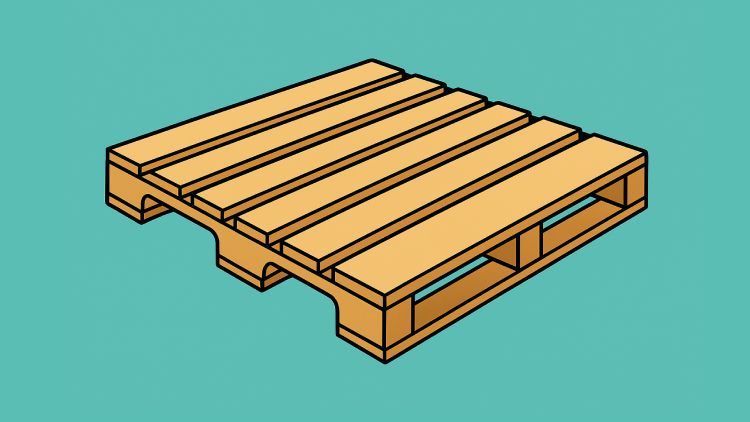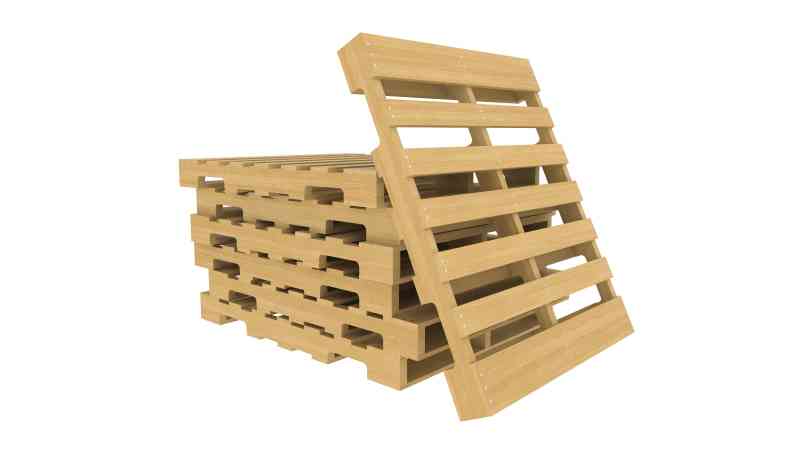GMA Pallets vs Non-GMA: When Standardization Pays Off
How gma pallets compare to non-GMA—and when a standard 48×40 spec saves time, money, and headaches.

Key takeaways
- Standards reduce surprises. GMA pallets deliver predictable size, design, and performance that simplify receiving, storage, and shipping.
- Same size ≠ same pallet. Many 48x40 wood pallets are not GMA; build details drive durability, handling, and price.
- Pick for the job. Use GMA for interchange and automation; use non-GMA when custom specs or lower pallet prices matter most.
If your loads touch grocery, retail, or high-volume distribution, GMA pallets can save time and money. Standardization means fewer jams on conveyors, smoother forklift picks, and fewer claims. But non-GMA pallets have a place too—especially for custom jobs and one-way shipments. This guide shows where standardization pays off and when a non-GMA build makes sense.
What is a GMA pallet?
A GMA pallet is a 48x40, 4-way entry pallet built to common industry specs used across grocery and consumer goods. Typical features include:
- Seven top deck boards and five bottom boards
- Three stringers (or block design) with consistent notches/clearances
- Uniform nailing patterns and board thicknesses
Because dimensions and build are predictable, GMA pallets flow through automated systems, fit racking better, and interchange smoothly between partners.
Bottom line: GMA equals predictable handling and fewer surprises.

GMA pallets vs non-GMA: fast comparison
| Feature | GMA Pallets | Non-GMA 48x40 | What It Means for You |
|---|---|---|---|
| Size | 48x40 | Often 48x40, but may vary in details | Same footprint doesn’t guarantee same performance |
| Entry | 4-way | 2-way or 4-way | 4-way is faster to pick and stage |
| Deck boards | 7 top / 5 bottom typical | Count and spacing vary | Board count affects strength and product support |
| Consistency | High | Mixed | Variations can slow automation or cause jams |
| Interchangeability | Designed for it | Not guaranteed | Easier cross-dock and returns with GMA |
| Typical use | Grocery, retail, automated DCs | Manufacturing, one-way, custom loads | Match to your handling environment |
Takeaway: Standard details—not just size—drive uptime and safety.
Why standardization pays off
Standard specs mean fewer exceptions. Forks slide cleanly. Conveyors don’t stall. Pallet positions in racking line up every time. That predictability cuts soft costs: fewer reworks, fewer repacks, fewer claims, and faster turns.
In high-throughput buildings, the cheapest pallet is often the one that doesn’t slow the line.
48x40 wood pallets: same footprint, different results
Many pallets share the 48x40 footprint. Some are GMA. Many are not. Differences that matter:
- Board thickness & spacing: Impacts product support and nail pull-out.
- Stringer quality: Cracks or heavy plugs can fail under edge racking.
- Entry type: 2-way limits flexibility in tight aisles and staging.
Rule of thumb: If you need the 48x40 footprint and reliable flow through automation, choose a true GMA build or a spec that mirrors it.
GMA pallets in the real world
Use GMA pallets when you:
- Ship into grocery or retail DCs that expect standard builds
- Run conveyors, sorters, or AS/RS systems
- Need repeatable rack fit and stack patterns
- Share pallets across partners and return loops
Result: Higher first-pass yield and fewer handling exceptions.

When non-GMA pallets make sense
Choose non-GMA when you:
- Need custom specs (special deck spacing, thicker boards, custom footprints)
- Run mostly one-way shipments where interchange doesn’t matter
- Want to prioritize lower pallet prices for general freight
- Handle odd-size cartons or equipment that benefits from a different deck layout
Pro tip: Specify the critical features (board count, entry, thickness) so you still get a functional pallet at a better price.
Pallet prices: how standardization affects cost
Pallet prices depend on lumber markets, grade, and build. GMA-grade pallets often cost more than generic 48x40 due to tighter specs and higher consistency. But the premium can be offset by:
- Fewer line stoppages
- Lower damage rates
- Faster loading and receiving
If you’re not automated and don’t interchange, a non-GMA built to your minimum spec can lower unit cost without hurting performance.
Spec checklist: choosing the right path
Lead with the decision, then confirm the details below.
- Pick GMA if: You serve grocery/retail DCs, run automation, or need interchange.
- Pick non-GMA if: You ship one-way, need custom features, or chase the lowest unit price.
- Confirm critical specs: Entry type, top/bottom board count, board thickness, stringer integrity, and clearance for your forklifts and conveyors.
One page, one truth: Write your pallet spec and share it across purchasing, ops, and suppliers.

FAQs
Are all 48x40 pallets GMA?
No. Many 48x40 wood pallets are not GMA. Size alone doesn’t define the build.
Do GMA pallets work better on conveyors?
Usually yes. Consistent notches, board spacing, and stiffness mean fewer stoppages.
Is Grade A the same as GMA?
No. Grade A/B describe condition of used pallets. GMA describes design/standard.
Will non-GMA pallets get rejected at retail DCs?
They can. It depends on the DC and your agreement. Confirm specs before shipping.
How can I lower pallet prices without hurting performance?
Keep the 48x40 footprint, specify 4-way entry, then relax non-critical details. Test before rolling out.
Conclusion
Standardization pays when your operation values speed, safety, and interchange. That’s the promise of choosing GMA pallets. But non-GMA pallets can shine for one-way freight, unusual loads, and tight budgets. Choose the build that fits your environment, write the spec, and then stick to it. Your lines, partners, and customers will feel the difference.

